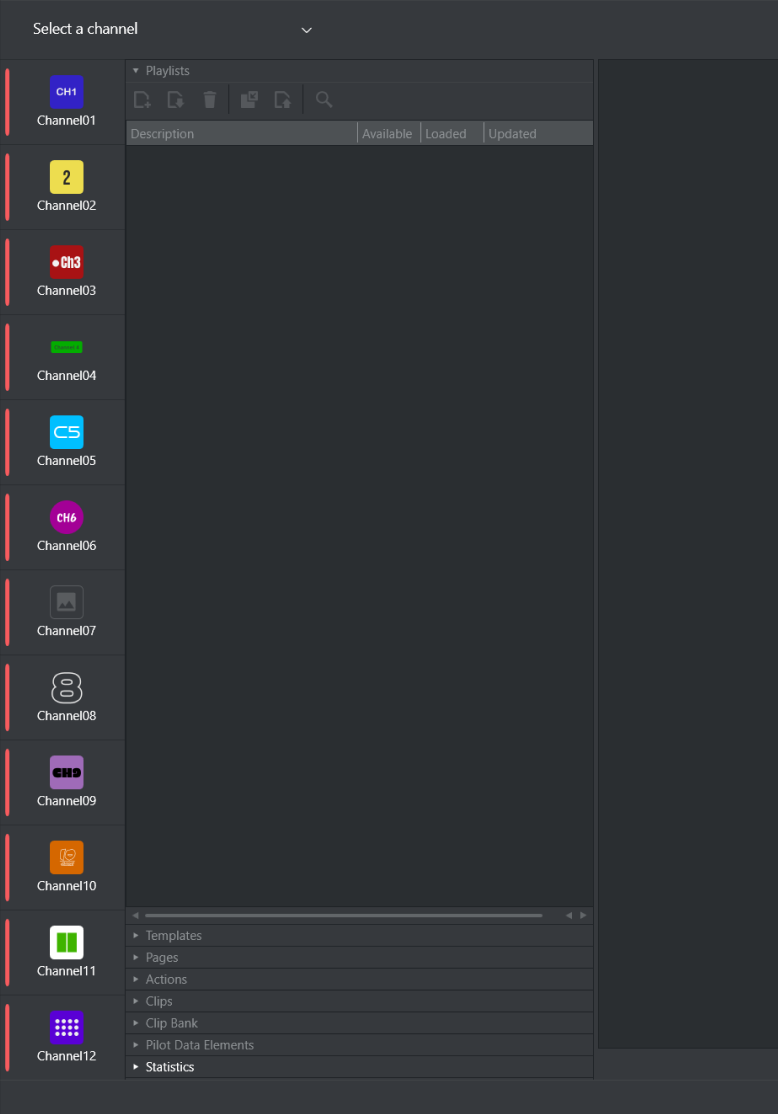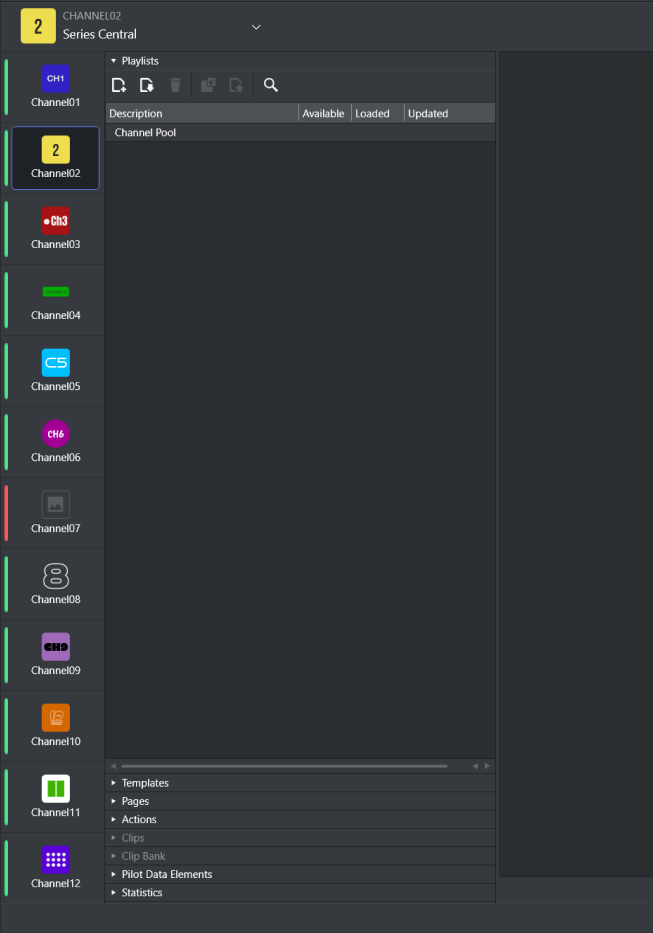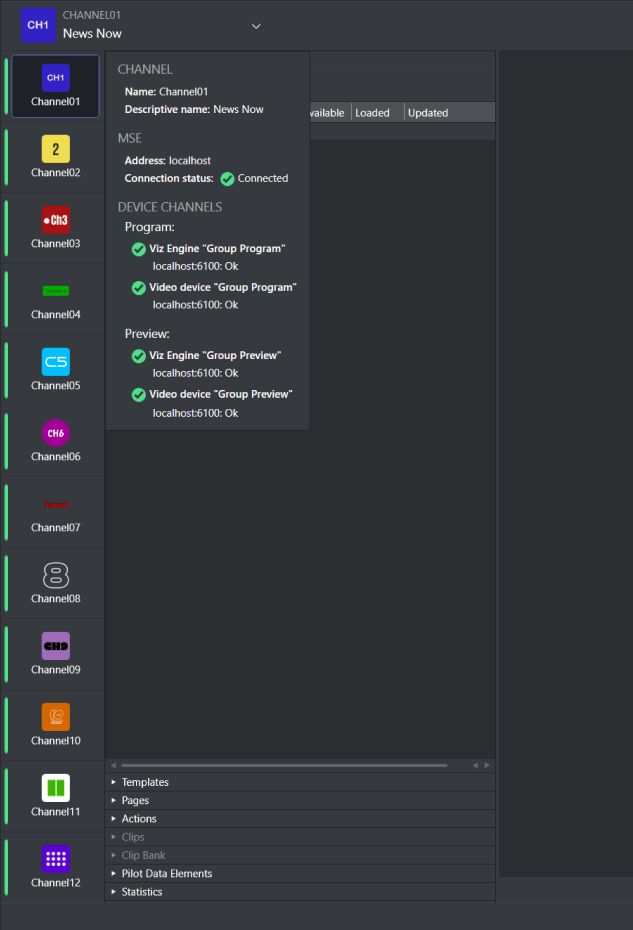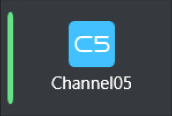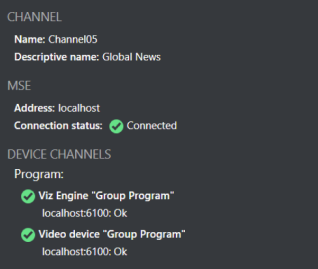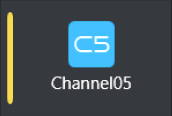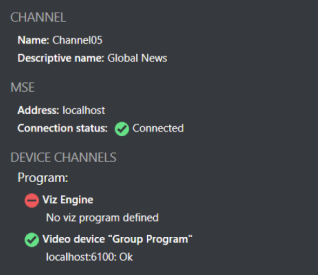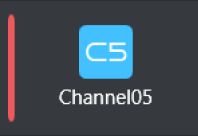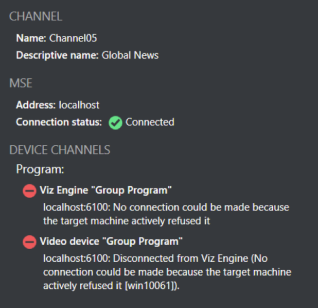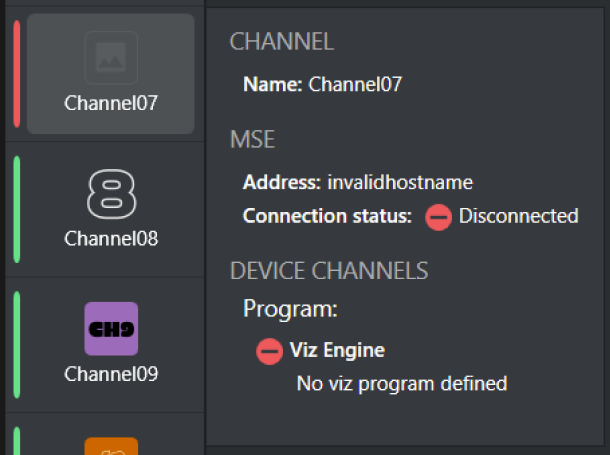This chapter defines and describes tasks that are typically performed by the automation system after control of the playlist has been handed over by the scheduling system in the traffic department.
This section contains information on the following topics:
Activate the Playlist
When a playlist is activated for the currently selected channel, Media Sequencer can start to transfer full screen video clips from your media asset management system (for example Viz One) to Viz Engine for playout.
When activated, Media Sequencer is made aware of the playlist’s schedule. Without the schedule, Media Sequencer will not be able to initialize the elements and run the playlist properly. Hence, once activated you can Initialize the Playlist.
A playlist can be automatically activated based on Rules or Day Switch Options (day switch options are common for broadcast day playlists) or by manually clicking the Activate button when the playlist is open.
To manually activate a playlist
Select your channel.
Click the Playlists button.
All existing playlists for the selected channel are displayed.Open your playlist.
From the Playlist Toolbar, click the Run Playlist button.
Initialize the Playlist
All playlist pages (graphics including embedded video clips and imagery) that are initialized for the currently selected channel are loaded on the Viz Engine program for playout.
When activated and initialized, Media Sequencer is aware of the playlist’s schedule and is able to Run the Playlist.
A playlist may be initialized based on Rules (this is common for continuous playlists), Day Switch Options (this is common for broadcast day playlists) or by manually clicking the Initialize button when the playlist is open and active.
To manually initialize a playlist
Select your channel.
Click the Playlists button. All existing playlists for the selected channel are displayed.
Open your playlist.
From the Playlist Toolbar, click Initialize Playlist .
Run the Playlist
When in run mode, a playlist is activated and initialized for the currently selected channel. All full screen video clips and all pages (graphics including embedded video clips and imagery) are then available and loaded on the Viz Engine program for playout.
When in run mode, Media Sequencer has a playlist that is activated and initialized and the system can take elements on air.
A playlist is almost always automatically run by Media Sequencer. If there are multiple broadcast day playlists, these are run according to Day Switch Options. A playlist can be manually run by an operator, but this is not recommended nor common practice.
Note: Only one playlist per channel can be in Run mode at a time.
To manually run a playlist
Select your channel.
Click the Playlists button.
All existing playlists for the selected channel are displayed.Open your playlist.
From the Playlist Toolbar, click the Run Playlist button.
When in Run mode, the film roll icon seen at the top of the playlist will turn green. When stopped, the icon will be grayed out.
If manual intervention is required, control the playout using the control buttons available on the Playlist Toolbar.
Take: Takes the selected playlist element (or group of elements) on air.
Continue: Continues the animation of the playlist element.
Take Out: Takes the current playlist element off air.
Triggers
Triggers can be set on Primary Events and Secondary Events (pages and video clips - see below).
Note: Triggers are configured in Basic Settings. Triggers are only accepted when a Playlist is in Run mode.
Primary Events
Primary events are triggered by automation systems that send triggers to start playing out groups (primary event/element). All secondary events that exist under each group are automatically played out by the solution. Playout of the secondary events is relative to the time of the trigger of the primary event and based on the defined offset of the secondary events.
Secondary Events
Secondary events can be triggered by automation systems. This includes all types of secondary events such as pages with video clips and video clips with graphics overlay.
In the case of secondary events, Viz Channel Branding will simply act as a slave system listening for triggers to take events on air.
Monitoring
In most cases, the solution requires little or no monitoring as the automation system usually controls the playout. In the Control Room, playout is typically monitored live on TV displays set up for that purpose.
Playout can also be monitored on a dedicated Viz Engine machine (if installed).
For monitoring purposes, Master Control Room (MCR) mode of the client application displays a sidebar listing all configured channels, with their status:
The sidebar allows selecting channels by clicking on the channel directly, and the client as well as the Channel selector dropdown are updated with the new selection:
Hovering-over a channel icon displays channel details and status:
A channel can have one of three different status, depending on the Media Sequencer and channel playout devices presentation:
Type | Channel | Tooltip example |
|---|---|---|
Success | ||
Warning | ||
Error |
Note: Channel details like logo and descriptive name are fetched from the Media Sequencer configured in channels.ini. If this connection fails, these details are not displayed and an error status is presented.
Live Schedule Updates
If playlists are liable to be changed a great deal, it is recommended that updates be done in the automation system and updates to the solution be done automatically and frequently using direct integration against Integrations Hub component.
Fail-over Procedure
In the case of fail-over, you need to be prepared beforehand to accommodate such a situation.
The prerequisite to backing up is to have an extra machine with the Viz Engine and Media Sequencer and configure either a hot or cold backup solution. A hot solution includes having either an engine or both MSE and engine actively play out the current content, while a cold solution could either be a dormant machine with multiple channels in waiting or a semi-hot solution where the automation and all other components are in a prepared backup chain for fail-over when needed. Each installation may have individual or distinct considerations and should be designed during the installation phase.
See Also








